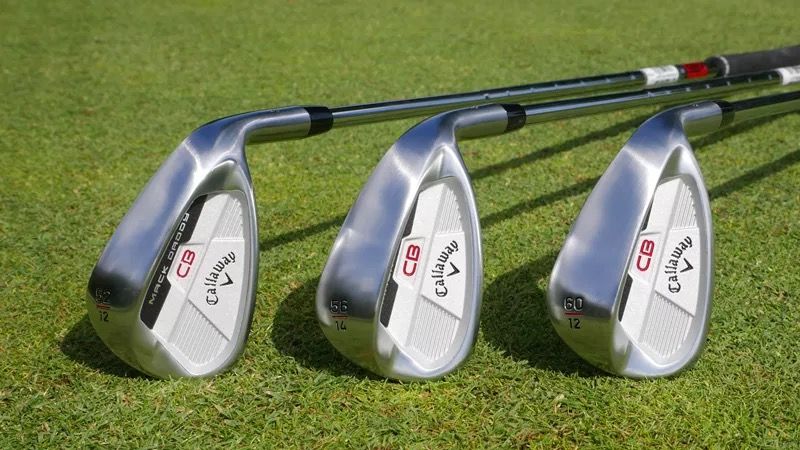Callaway Mack Daddy CB Wedge Review
The goal of the MD CB wedge was to provide a more user-friendly option with which to chip and pitch without sacrificing control or versatility (you can read about the technology here) and we have to say this has comfortably been achieved.
These wedges certainly look like game-improvement, cavity back irons, especially in the lower lofts (46-52°) as the faces have regular grooves and the full sole grind. Transitioning up into the higher lofts (54° and above) and the design changes into full face grooves and a slightly lower leading edge to allow you to open the clubface.
One reason you would normally open the face is to increase the bounce and make the sole less prone to digging, but that isn’t required here. The super-wide soles mean there is much more resistance with the ground at impact, so if you catch it slightly early you can still get away with it. As such this wedge quickly made it into our guide on the most forgiving wedges (opens in new tab) and they are also some of the best wedges for beginners (opens in new tab) as a result.
It also means this wedges are very effective out of bunkers, helping the club get through the sand while maintaining speed instead of diving down too deeply, too early. Wet compacted sand would be a different story, but golfers don’t face this scenario too often.
Looks-wise, these wedges are large but for nervy chippers, the extra size behind the ball may be very welcome. The leading edge is quite rounded, allowing for the shorter bottom groove, and the satin finish works well in varying light conditions.
With such a wide sole, we questioned whether the full-face grooves, which really come into their own when the ball is sliding up an open face, would be necessary. But we were surprised at how flush the leading edge sat to the ground when we opened the face of our 56° sample, given it had 14° of bounce.
This meant we were still able to play a variety of shots with it and the longer stock grip allows you to choke down more easily too. Additionally,…
..
Click Here to Read the Full Original Article at Golf Monthly RSS Feed…
